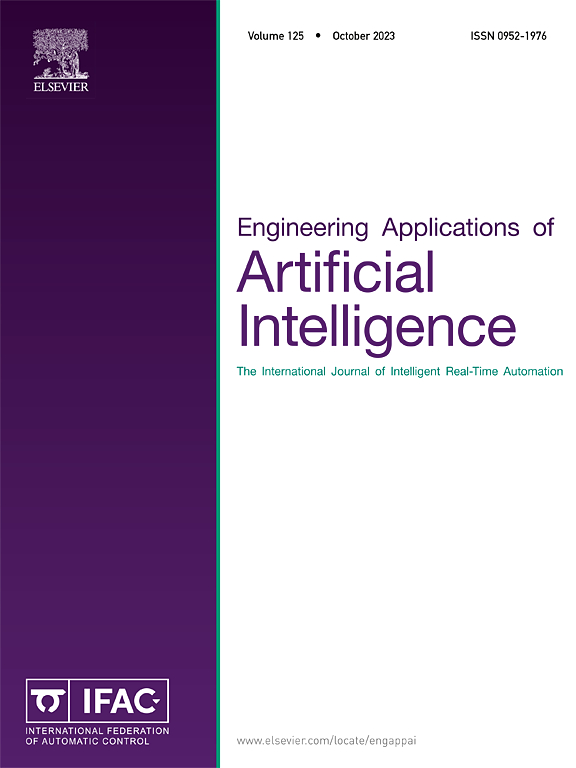基于Hoeffding树的油井钻进速度自适应预测方法
IF 8
2区 计算机科学
Q1 AUTOMATION & CONTROL SYSTEMS
Engineering Applications of Artificial Intelligence
Pub Date : 2025-07-02
DOI:10.1016/j.engappai.2025.111465
引用次数: 0
摘要
油井钻探是一个昂贵的过程,需要特别关注。因此,机械钻速(ROP)已被广泛认可为钻井效率和适当配置参数的衡量标准。在这项工作中,我们的目标是开发一个使用Hoeffding树来预测油田钻井中的钻进速度(ROP)的智能系统。选择Hoeffding树来构建我们的模型是由它们的自适应学习能力和漂移检测驱动的。它们提供连续、快速、高效的在线数据流学习和离线批处理数据学习。为了验证我们的方法,我们使用了位于阿尔及利亚东南部的“hsi - terfa”油田的真实钻井数据。所获得的结果表明,与极端梯度增强(XGBoost)算法相比,Hoeffding树即使在存在漂移的情况下也能保持其学习能力并产生更准确的预测。这要归功于自适应窗口(ADWIN)算法来管理漂移和最小均方(LMS)滤波器来降低噪声的组合。这一观察结果突出了我们在油井钻井过程中预测ROP方法的有效性。所提出的智能系统提供了更有效的解决方案来预测ROP,无论是实时还是离线。通过利用其对数据分布变化的适应性,我们的方法确保了更准确和适应性的预测,促进了钻井作业的优化,提高了整个过程的效率。本文章由计算机程序翻译,如有差异,请以英文原文为准。
Adaptive prediction of Rate of Penetration while oil-well drilling: A Hoeffding tree based approach
Oil well drilling is an expensive process that needs a particular focus. For this reason, Rate Of Penetration (ROP) has been widely approved as a measure of drilling efficiency and adequate configuration parameters. Our aim in this work consists in the elaboration of a smart system using Hoeffding trees for predicting the Rate of Penetration (ROP) in oilfield drilling. The choice of Hoeffding trees to build our model is motivated by their adaptive learning capability and drift detection. They offer continuous, fast, and efficient learning both online on data streams and offline on batch data. To validate our approach, we used real drilling data from the “Hassi-Terfa” oilfield located in Southeast Algeria. The obtained results show in comparison to the eXtreme Gradient Boosting (XGBoost) algorithm that Hoeffding trees maintain their learning capacity and produce more accurate predictions even in the presence of drifts. This is thanks to the combination of the Adaptive Windowing (ADWIN) algorithm to manage drifts and least mean squares (LMS) filters to reduce noise. This observation highlights the effectiveness of our approach to predict the ROP while oil-well drilling. The proposed smart system offers more efficient solution to predict the ROP, whether in real-time or offline. By leveraging its adaptability to changes in data distribution, our approach ensures more accurate and adaptive predictions, facilitating drilling operations optimization and boosting the overall efficiency of the process.
求助全文
通过发布文献求助,成功后即可免费获取论文全文。
去求助
来源期刊

Engineering Applications of Artificial Intelligence
工程技术-工程:电子与电气
CiteScore
9.60
自引率
10.00%
发文量
505
审稿时长
68 days
期刊介绍:
Artificial Intelligence (AI) is pivotal in driving the fourth industrial revolution, witnessing remarkable advancements across various machine learning methodologies. AI techniques have become indispensable tools for practicing engineers, enabling them to tackle previously insurmountable challenges. Engineering Applications of Artificial Intelligence serves as a global platform for the swift dissemination of research elucidating the practical application of AI methods across all engineering disciplines. Submitted papers are expected to present novel aspects of AI utilized in real-world engineering applications, validated using publicly available datasets to ensure the replicability of research outcomes. Join us in exploring the transformative potential of AI in engineering.
 求助内容:
求助内容: 应助结果提醒方式:
应助结果提醒方式:


